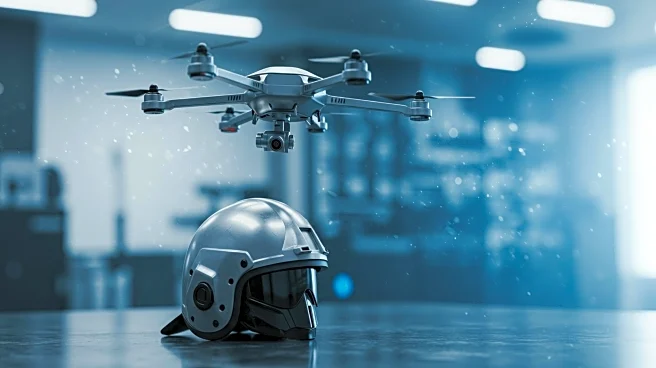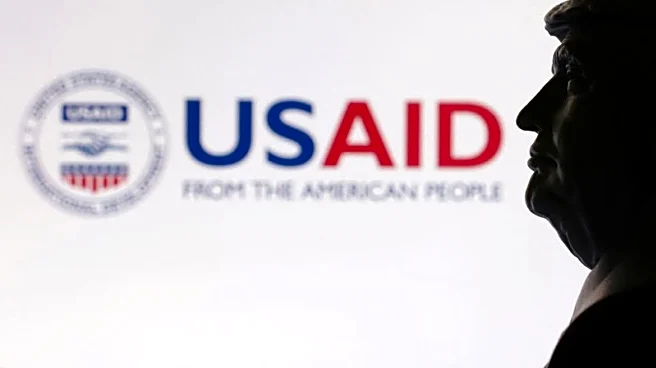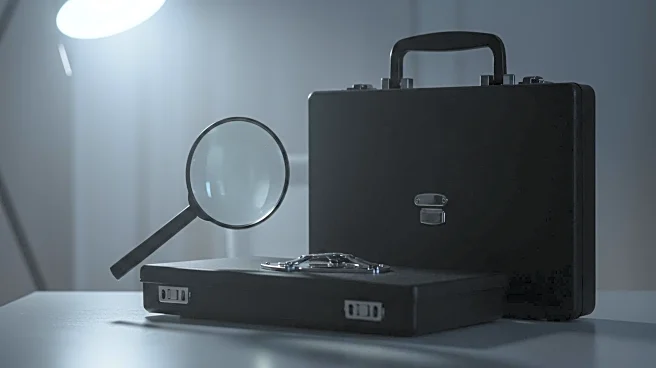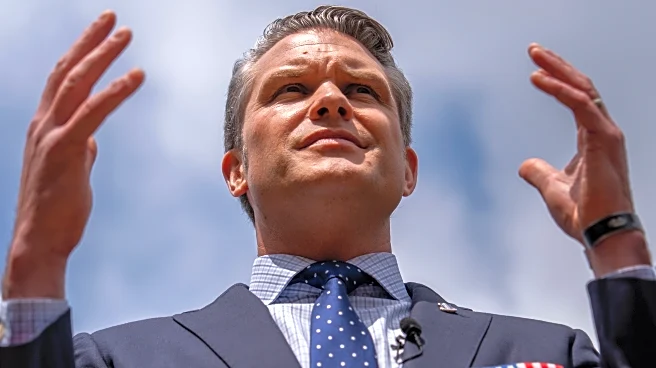What's Happening?
On Wednesday evening, the MAGA cable channel One America News Network (OAN) aired a segment featuring Defense Department spokeswoman Kingsley Wilson discussing an alleged increase in female military recruits. During the segment, four images of women soldiers in combat fatigues were displayed, which were later identified as AI-generated. The images appear to have been created using Elon Musk's Grok, as indicated by small watermarks. Wilson claimed that female recruitment numbers had risen from 16,000 last year to 24,000, attributing this increase to the leadership of Secretary Hegseth and President Trump. However, the Pentagon has not officially released detailed data on female recruitment, although it confirmed these figures to Fox News. CNN reached out to OAN for clarification on the use of AI-generated images and any policies regarding such content, but the network did not respond.
Why It's Important?
The use of AI-generated images in media raises significant ethical and credibility concerns, particularly when used to support claims about military recruitment. This incident highlights the potential for misinformation and the challenges in verifying the authenticity of visual content. The broader implications affect public trust in media outlets, especially those with a history of promoting conspiracy theories and misinformation, such as OAN. The network's decision to use AI-generated images without disclosure could undermine confidence in its reporting and contribute to skepticism about the reported increase in female military recruits. This situation underscores the need for transparency and accountability in media practices, especially in politically charged contexts.
What's Next?
The incident may prompt discussions within media and defense circles about the ethical use of AI-generated content and the importance of transparency in reporting. Stakeholders, including media watchdogs and government agencies, might push for clearer guidelines and policies to prevent the misuse of AI technology in news reporting. Additionally, OAN's lack of response to inquiries about its practices could lead to increased scrutiny and pressure to address these concerns publicly. As AI technology becomes more prevalent, media organizations may need to adopt stricter standards to ensure the accuracy and integrity of their content.
Beyond the Headlines
The use of AI-generated images in this context reflects broader trends in media and technology, where AI is increasingly employed to create content. This raises questions about the future of journalism and the role of AI in shaping public perception. The ethical implications of using AI-generated images without disclosure could lead to debates about the responsibilities of media outlets in maintaining journalistic integrity. Furthermore, the incident highlights the potential for AI to be used in ways that could manipulate or distort reality, emphasizing the need for ongoing dialogue about the ethical boundaries of AI in media.














